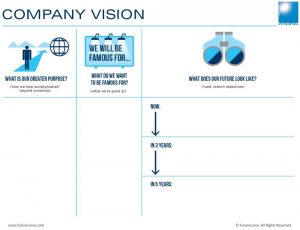
Search engine optimisation (SEO) is still important, no doubt, but much has changed over the past few years and even months. It’s true that SEO tips are usually most useful only at the time they are published since they change with every major search engine update. We also all know how hard it is to keep up with these updates (among our other marketing efforts), but it doesn’t have to feel like a hurdle you have to jump.
Some of the best practises for SEO have stood the test of time (as well as algorithms!), because ultimately, search engines (especially Google) prefer unique, relevant content. Below is a list of 6 pretty much evergreen tips for SEO’ing your blog that you are most welcome to apply and share. But first, let’s dive into why blogs are super important to your content strategy and marketing overall, to put it all into context.
Blogs are essential to your content marketing strategy
When was the last time you researched a topic online and came across the exact information you were looking for? You probably avoided the paid advert section and product pages on e-commerce sites. Instead, maybe you turned to a blog or a news article with a comparison. And what made you click? Was it the catchy headline, the subject or the fact that it was conveniently placed on the first page in the search results? Also consider what made you read it word by word, without skimming through the headlines. You might have even felt the urge to share it on social media or at least tell your colleagues about it during lunch.
High quality, useful blog articles are key to a successful content marketing strategy and are your gateway to maximising your marketing efforts online.
You might ask yourself, why blogs?
Well, one of the main reasons for nominating your blog as your content hub is because it is a channel you can truly own and control. Social media networks are incredibly powerful, however specific rules apply to each one. The 140 character limitation on Twitter is great for short, punchy lines, but not as great for businesses trying to educate their customers about their industry. On Facebook for example, your posts might not even show up on the newsfeeds of your followers unless they actively engage with your page or subscribe to it. Similar newsfeed change is now coming to Instagram in the coming months as they promise to show more of what each user finds likeable and important, based on previous behaviour.
Another great reason to blog is the much longer lifespan of your content as it can be repurposed and accessed, all from the same place. The great win is in the ability to gather a powerful subscriber base that will look forward to every article or piece of content you publish. Social media networks are then used to help other audiences discover and engage with your content, turning into your loyal followers (if your content is that great, and if you follow the tips we keep sending you, it will be!).
Super simple and useful SEO tips for blogging success
High-quality blog articles that are both engaging and educational is your ultimate goal. Without researching keywords and optimising each article for search engines it is highly unlikely they will be found by new visitors (this is vital if you are just starting out with your blog or don’t have a subscriber base). What are we talking about you may ask? Basically, your blog articles need to be found in the search engine by potential readers. This is how you make sure that happens:
1. Write for people, not search engines
The days of keyword stuffing are long gone. And as more than two million blog articles are shared every day, every business and blogger is are fighting for their glory on the first page on Google, Bing and Yahoo. The key to a successful blog is the ability to provide a better (or more interesting) solution than anyone else has in the past. This involves educating your audience and building trust and authority, without pushing them into buying your product or service before they are ready. You could write about an issue your customers are having or a piece of advice you are more than happy to give away for free. Separate providing useful content to your audience and selling products to your customers, and you won’t go wrong.
2. Do your homework – keywords are KEY
If you have a website you most likely already have a list of focus keywords that you want to be found for in searches. These can be used as the starting point to generate interesting topics that will in turn help you climb up in search results. Google Keyword Planner is especially great for telling you the search volume for particular keywords and how they compare.
With your competition in mind, you might want to use long tail keywords instead of short ones. For example, social media agency will be highly competitive (lots of people using it) while adding a location, e.g. “social media agency in Boston” is more targeted and less competitive.
Keywords are also valuable in anchor links (i.e. hyperlinked text like this). The anchor text should include keywords (avoid using “click here”) and can link to an older blog post of yours, to an influencer blog or even case study, just make sure you don’t over do it as you don’t want your audience leaving the article before finishing it.
3. Pick your titles with care
The title of your blog post largely determines whether someone will click on it. Make sure you include the focus keyword in your URL, Title and Metadata and don’t forget to add a little twist too. Once you have a few topics to choose from, test them in Google, Bing, Yahoo and see what the competition is like. Have a read and see how you can either improve what your competitors are doing or if you should even try. If you have more than one, keep the rest and use them when promoting your content (see Tip #6).
Another great way to find your twist is to go on sites like Quora or Reddit and see what questions on subjects get upvoted. You can also use tools like CoSchedule’s Headline Analyzer to see how successful your headline is or a number of headline generators if you need fresh ideas for your future articles. Also, remember that the most valuable resource is your audience, so asking them or simply having a look at Google Analytics can save lots of time when choosing the right topic as well as the title.
4. Optimise your visuals
Images come in all shapes and sizes – there is the header, then the GIFs, or even the funny images you use for humour. All of these can make your article much easier to read. So once you found the ones to add to your blog, don’t forget to optimise them with an alt title and description. The file names should also be similar to your focus keywords (as long as the image is relevant to the subject, e.g. don’t name an image of a cat content-marketing-tips.jpg).
If your blog post is especially lengthy, think of visualising some of the data. If you are handy with Adobe or you are just starting out and use tools like Canva, these data visualisations (also called infographics) will make you stand out and can be shared on social networks like Pinterest.
5. Be consistent
It is crucial that you don’t just create amazing content and know how to optimise it for search engines, you also have to be consistent with publishing it. Think of your blog as a magazine and of yourself as the publisher. Your audience will expect a particular amount of fresh content every week/month and if you fail to deliver, they will drop off. Your style, tone of voice and topics also have to stay consistent, so it’s always wise to plan your blog topics months ahead. If you are just starting out with blogging, plan to publish an article 2 to 3 times per week and see how your audience responds.
6. Promote your content
Connecting with other businesses and influencers is imperative to your content strategy in 2016, so focus on creating relationships with influencers rather than getting backlinks from not so closely related websites. The latter can actually prove to be quite damaging, so always keep track of what content you link to in your anchor links and what web pages have linked to yours.
Without an audience, your blog articles will remain unknown, so if you are not getting the desired amount of social media shares or comments, make sure that you are also taking the time to build an audience. One of the ways to promote your content to new audiences is by using a variation of headlines linking back to your blog over a course of few weeks, this technique is usually the most successful on Twitter.
Conclusion
Best SEO tips no doubt are the ones that encourage you to create unique, useful content for your audience to enjoy, but the fundamentals are still there and should be adhered to – namely finding and sticking to your focus keyword in titles, image names and URL’s.
According to search engines, only the best and most reliable blog posts display on the first page, and this can only be achieved by being consistent at creating high-quality articles, connecting with the industry you are part of as well as its influencers and of course, promoting your content to new audiences everywhere.
Digital & Social Articles on Business 2 Community(29)





